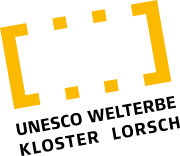
Pit house project (“Grubenhausprojekt”)
In archaeology of settlements of the Early and High Middle Ages, so-called pit houses are among the best documented building types of this period due to their eponymous construction method. Nevertheless, there is still a great lack of research into the actual function and use of these houses. Since 2015, the Lauresham open-air laboratory has been working intensively on the question of the interpretation, function, (re)construction and use of early medieval pit houses in southern Germany. In addition to the classic evaluation of settlement archaeological features, the open-air laboratory is also dedicated to the experimental archaeological (re)construction of selected pit house features in order to test certain hypotheses about individual house features and to investigate them in test series.
The focus of the experiments is not only on documenting the processes of production, use and decay, but also on researching the range of uses of deepened houses. Among other things, test series on the storage and preservation of foodstuffs were started. The full range of possible interpretations is also to be exploited by implementing a wide variety of (re)construction approaches to the same house finding. Other important components of the research project are analyses of the actual indoor climate of the houses as well as experiments on tool technology and the building materials used (wood, clay, straw, thatch). The aim is to collect meaningful hypotheses on the functionality of this special type of house.
Two of the largest settlement excavations in southern Germany, namely in Mannheim Vogelstang “Hinter der Nachtweide” and in Speyer “Vogelgesang”, serve as an important data basis for the (re)constructions.




Between January and October 2016, a first pit house feature was constructed as part of the experimental archaeological research project at Lauresham, followed by a further (re)construction in the winter half-year 2017/18. As part of a school cooperation project with the Heinrich Metzendorf School in Bensheim, pupils from a class at the technical college for construction technology then worked on one of the existing (re)constructed pit houses in the 2018/19 school year. The house was not only captured in drawings and models, but alternative possible (re)constructions and utilization concepts for this house were also developed. Before that, however, questions about the height, the timber construction and the use of a new pit house had to be clarified, while of course retaining the position of the posts and the respective distances specified by the findings. In the end, several variants of the pit house were designed, some of which were constructed very differently. Currently (as of spring 2020), a third pit house is being built based on the results of the school cooperation project. In this case, it is intended to pursue a different (re)construction approach to the pit house already built in 2017/18 and thus illustrate that the scope for interpretation in the (re)construction of early medieval buildings can sometimes be very large.
